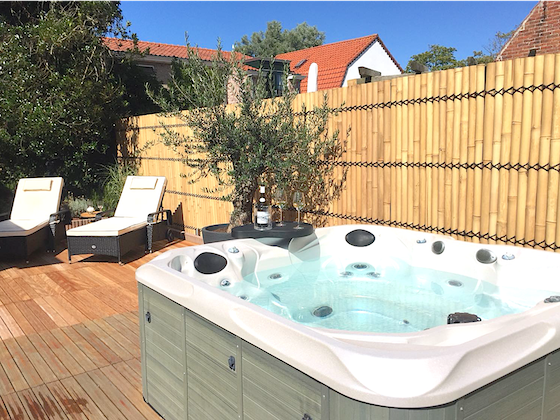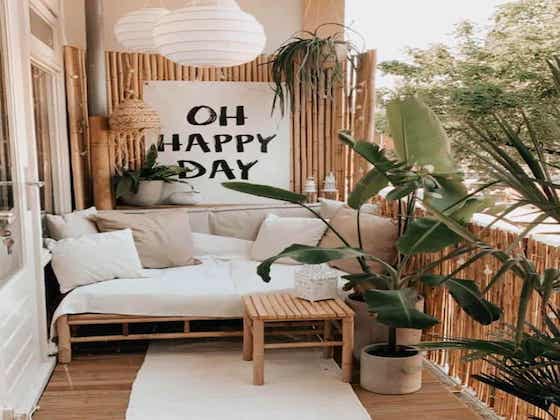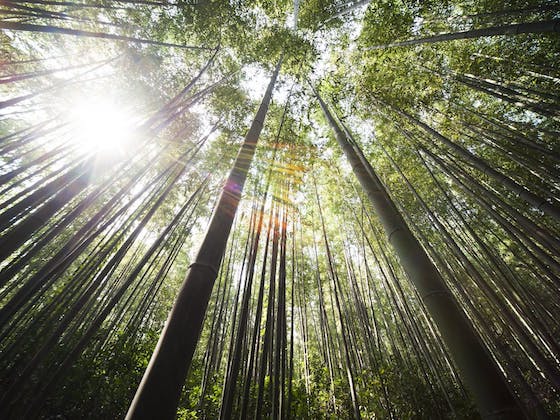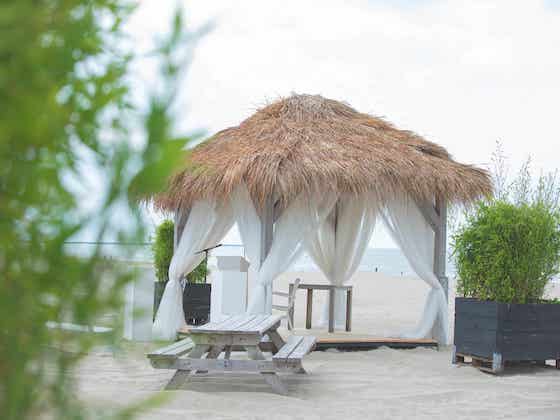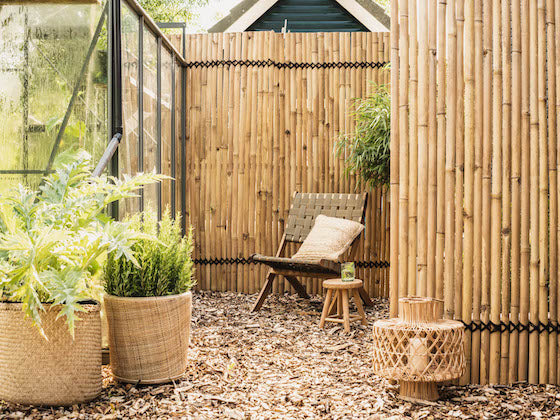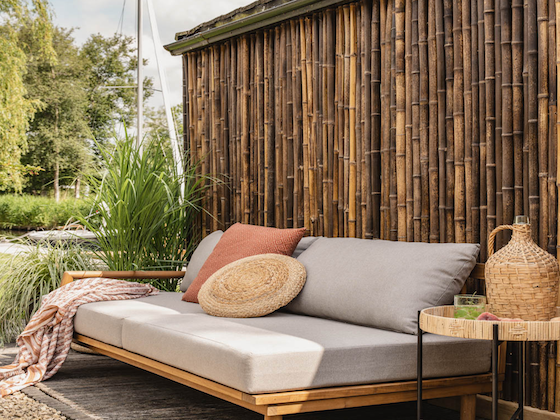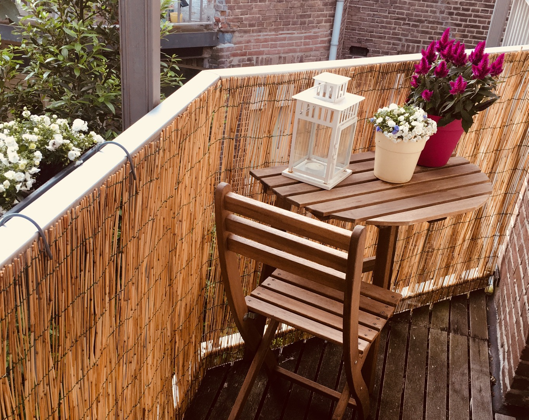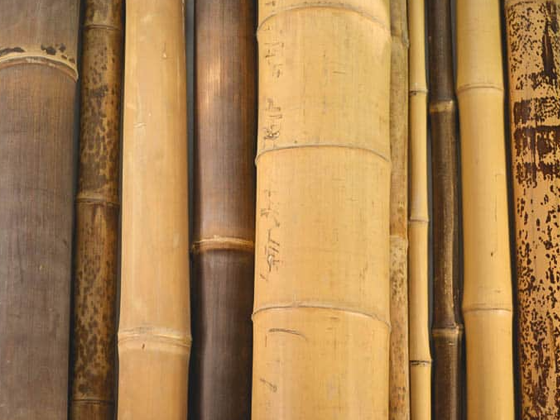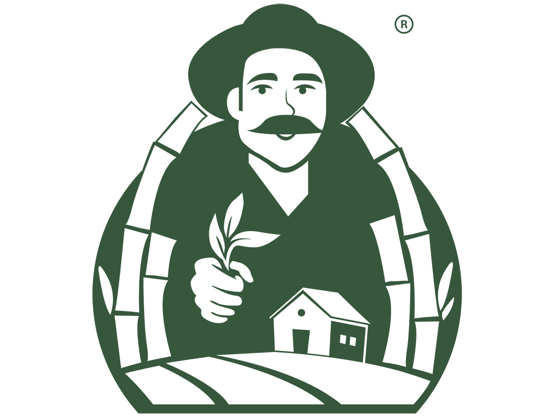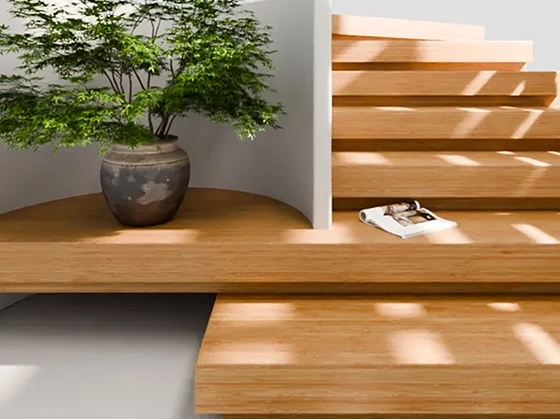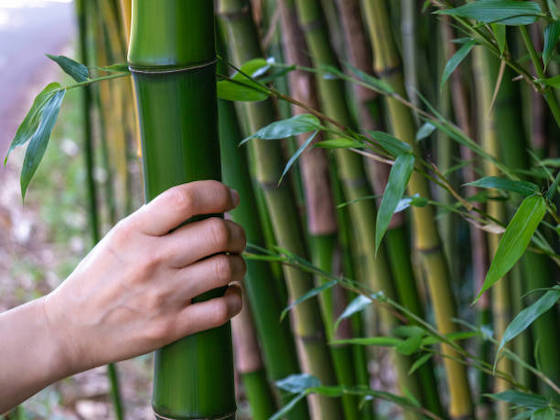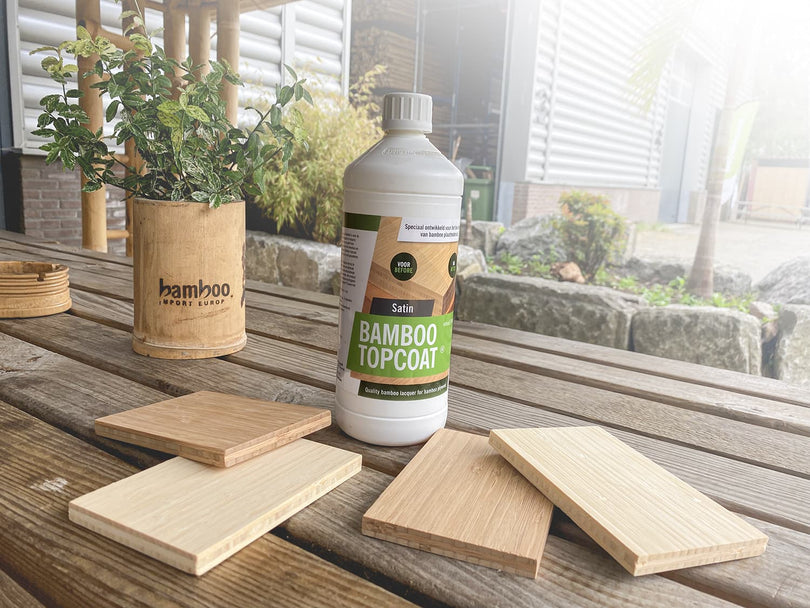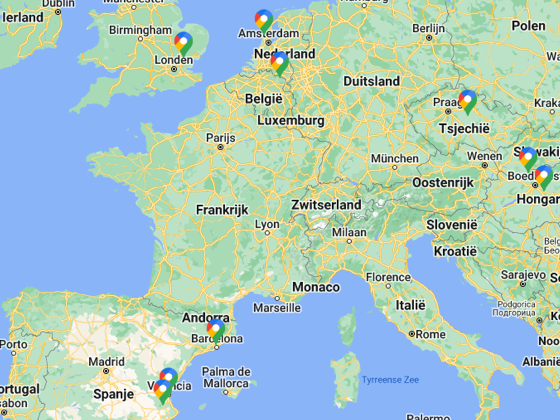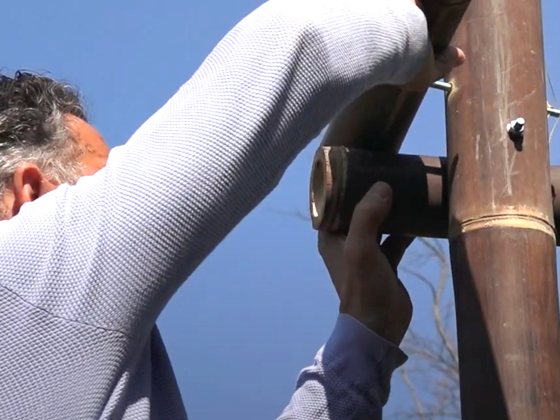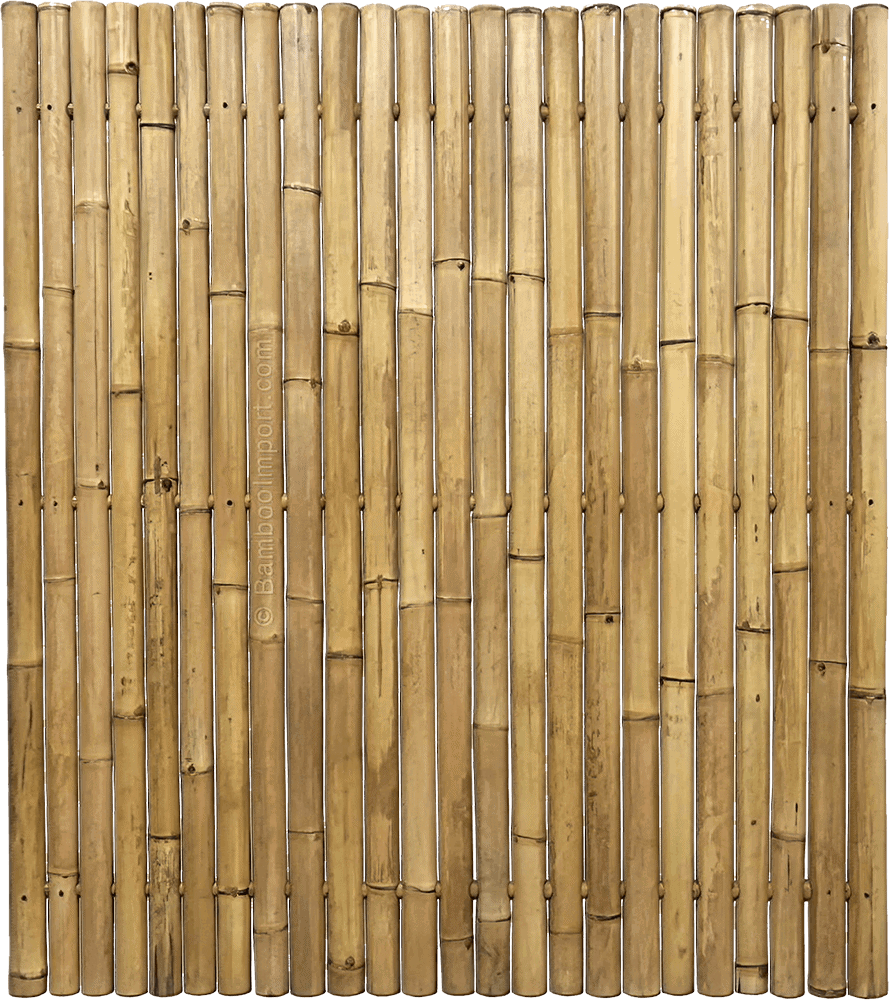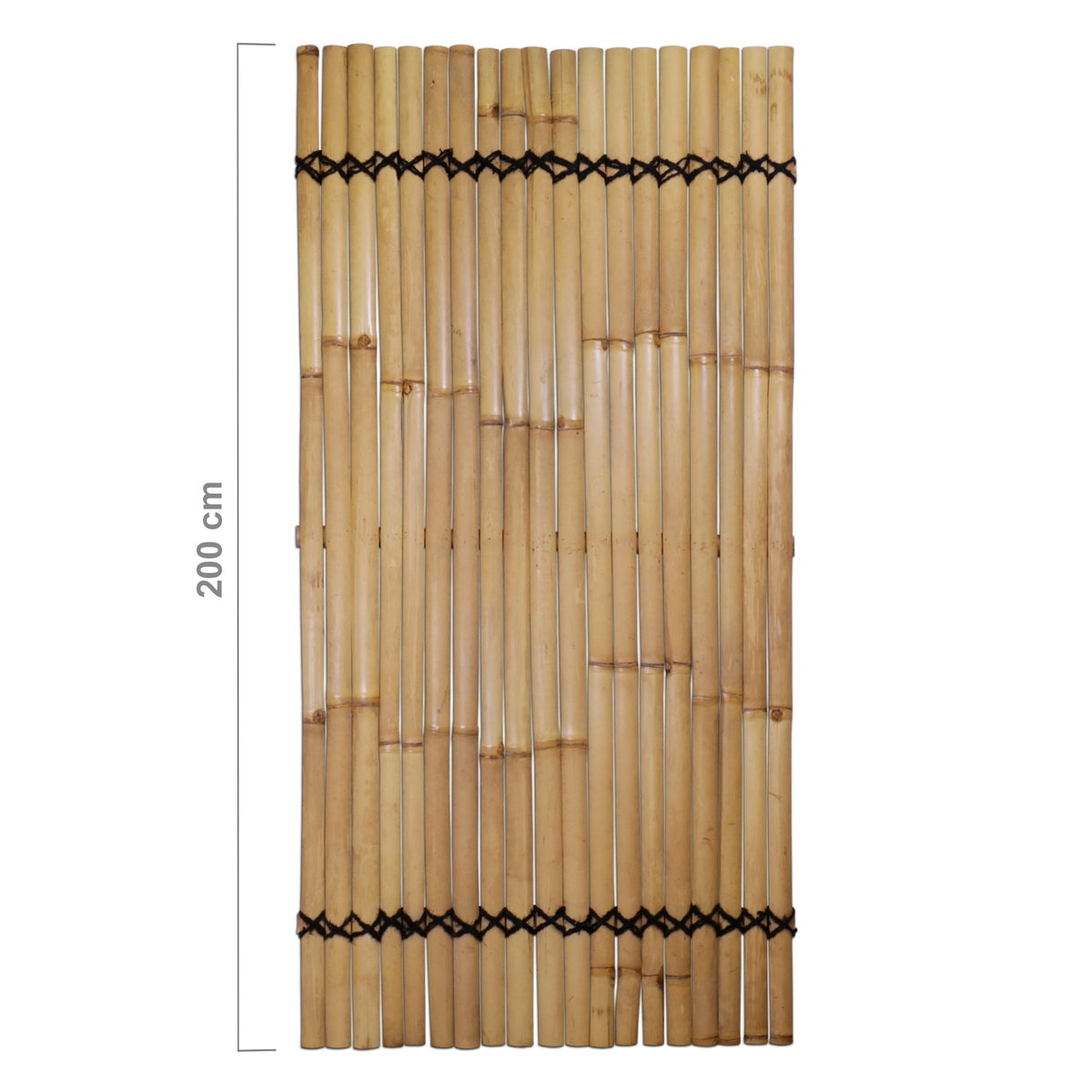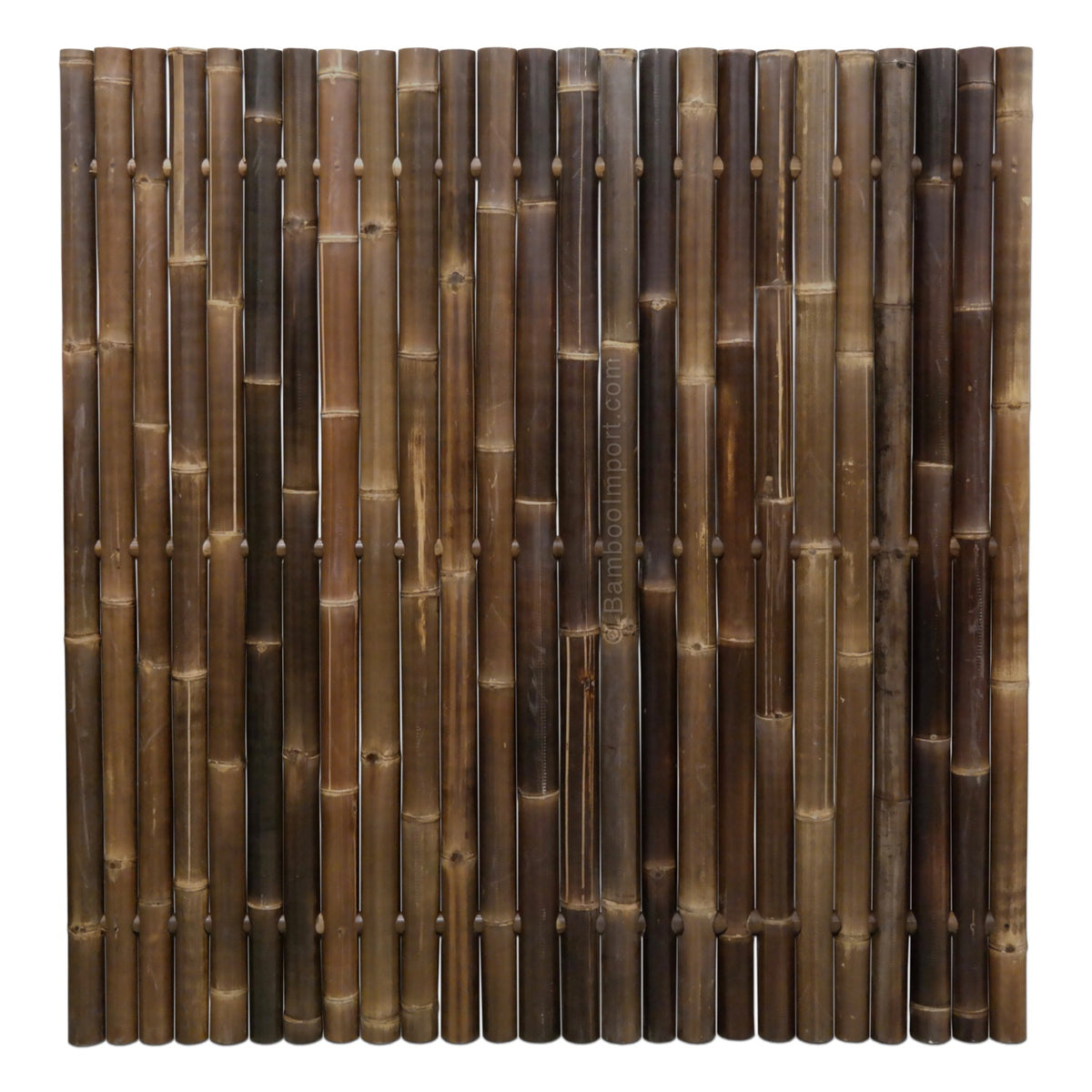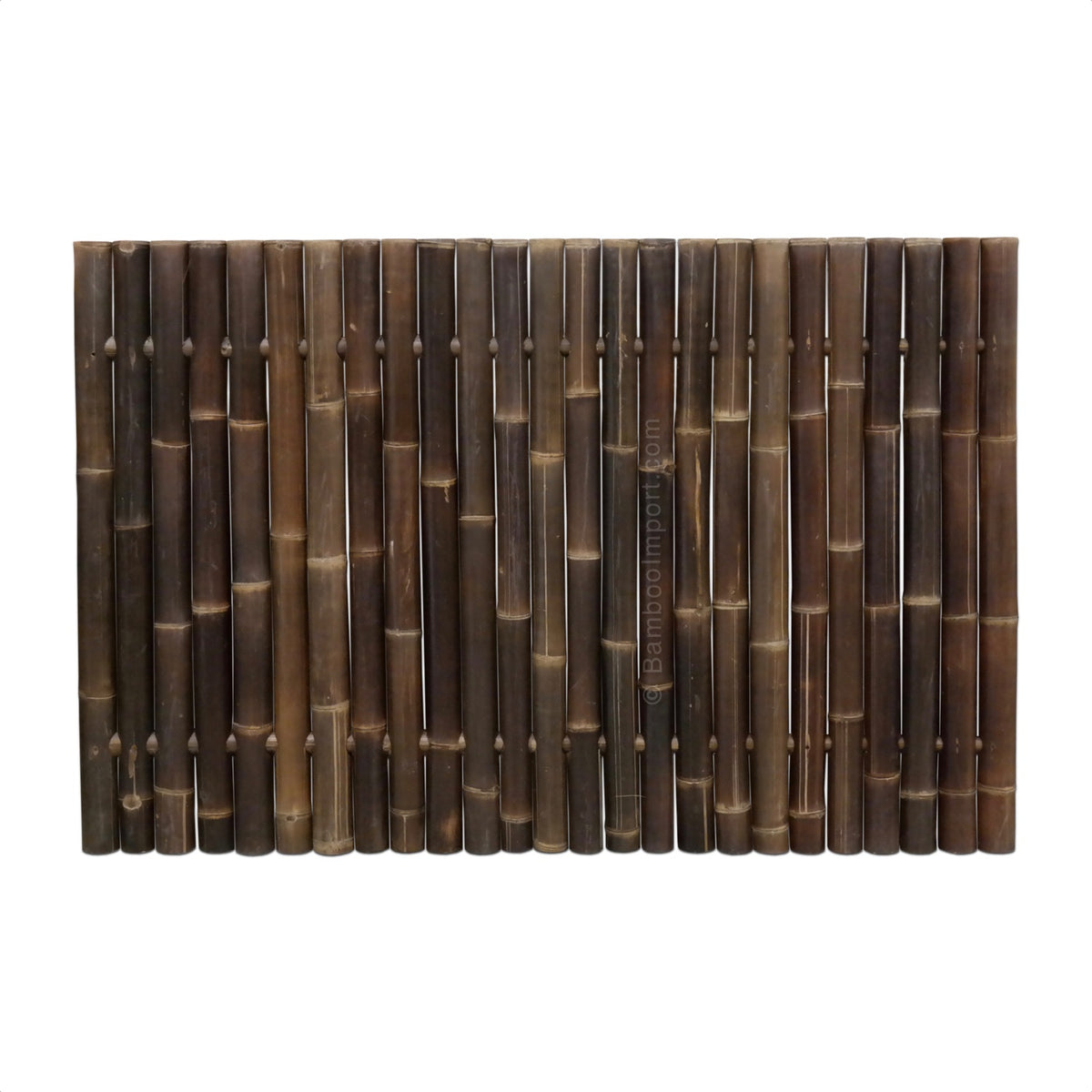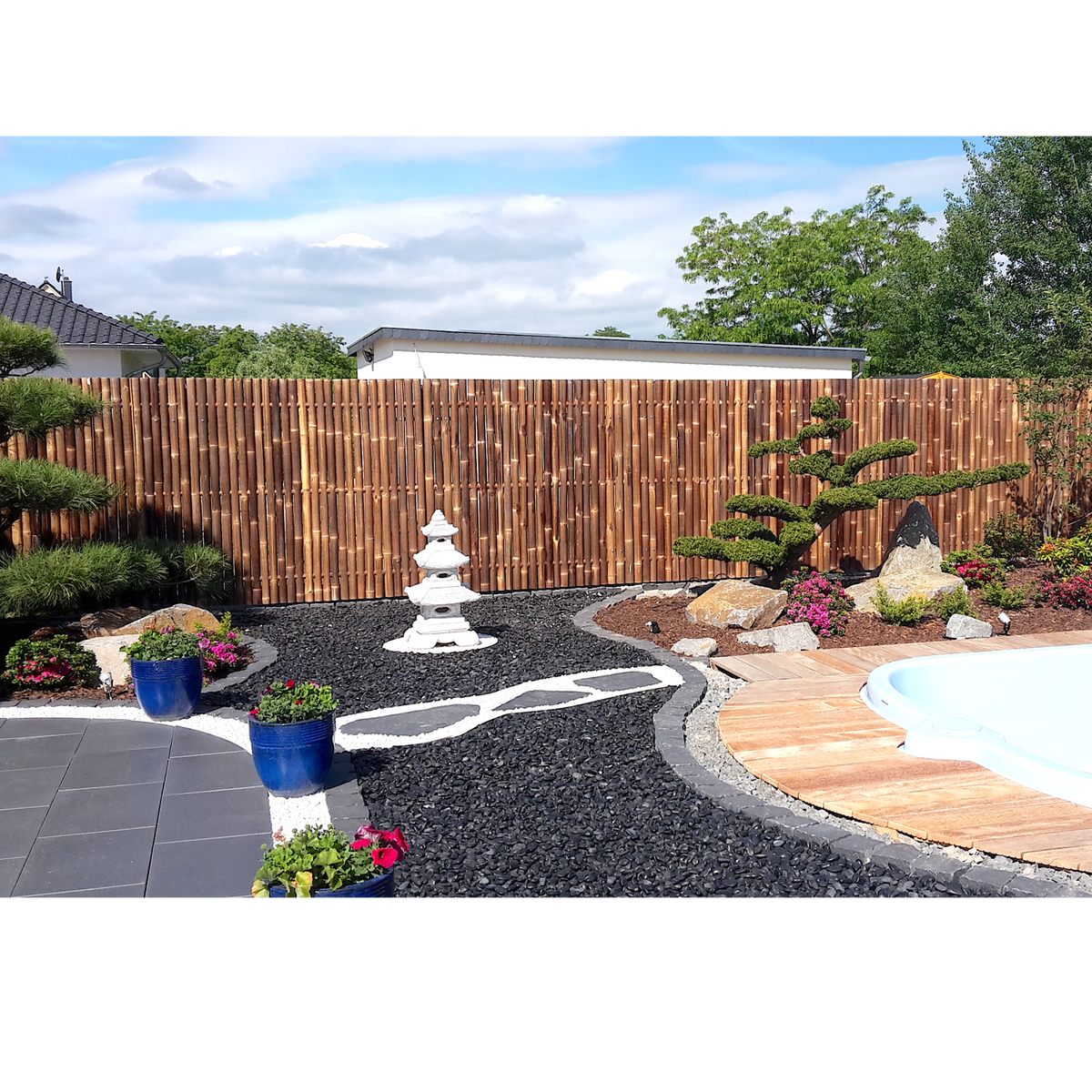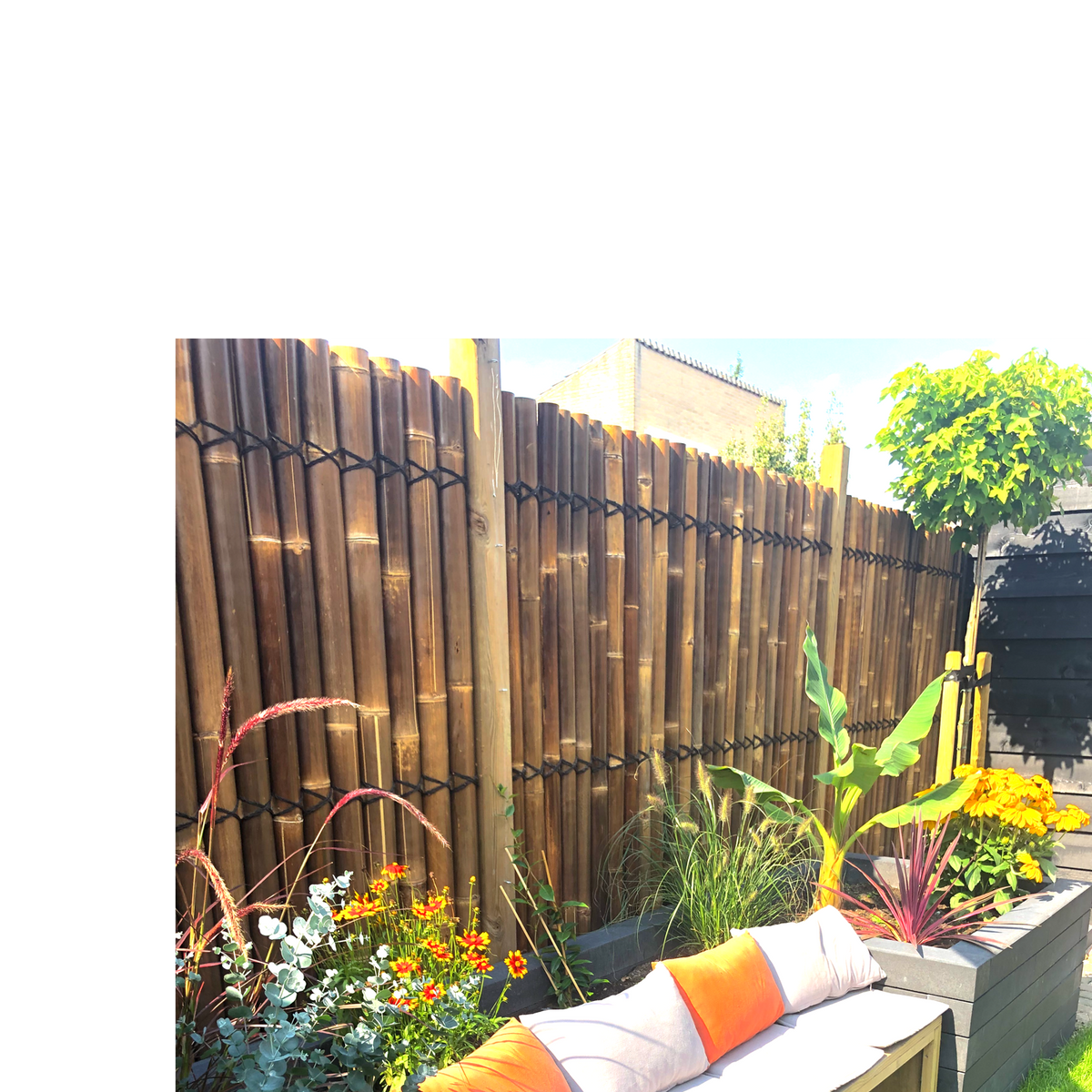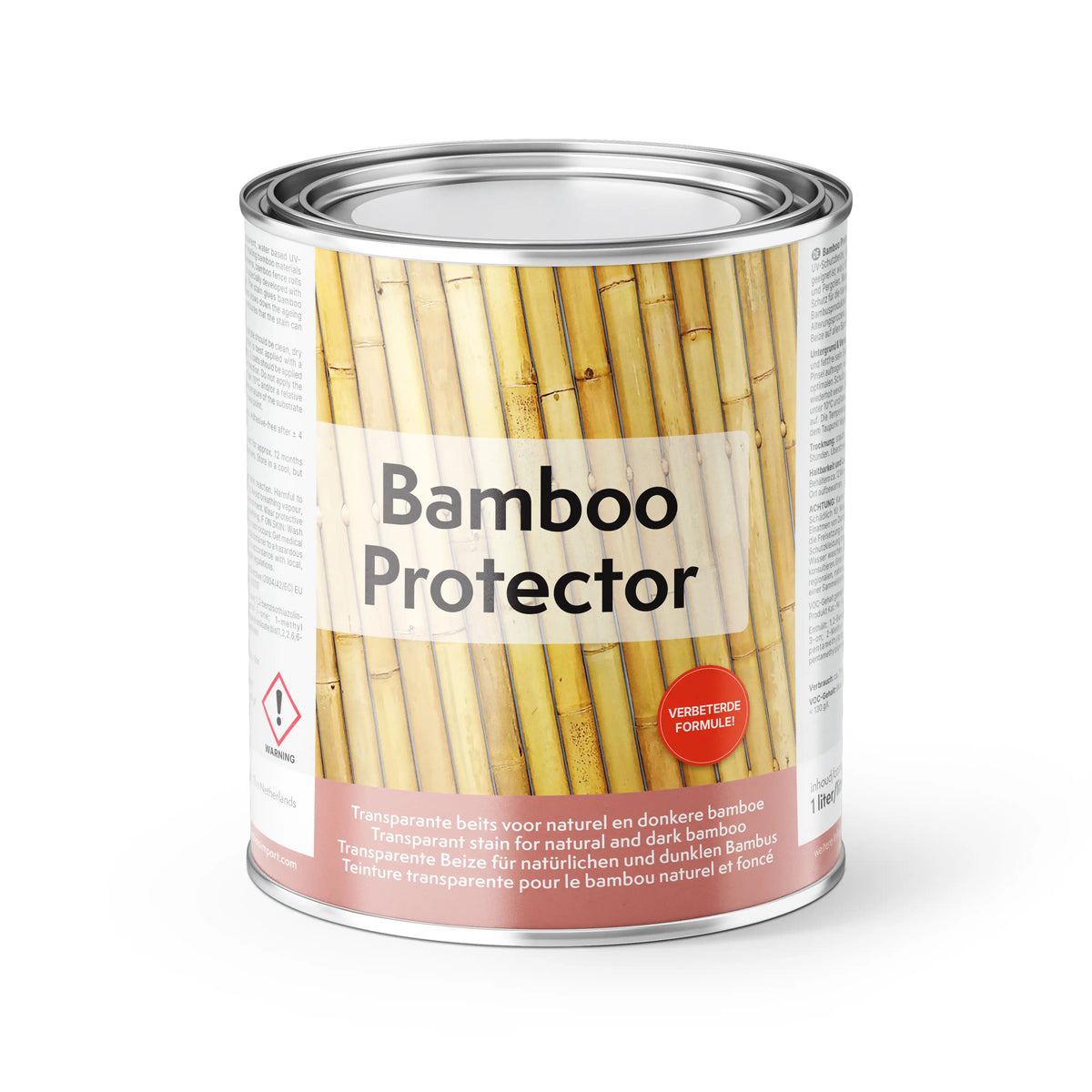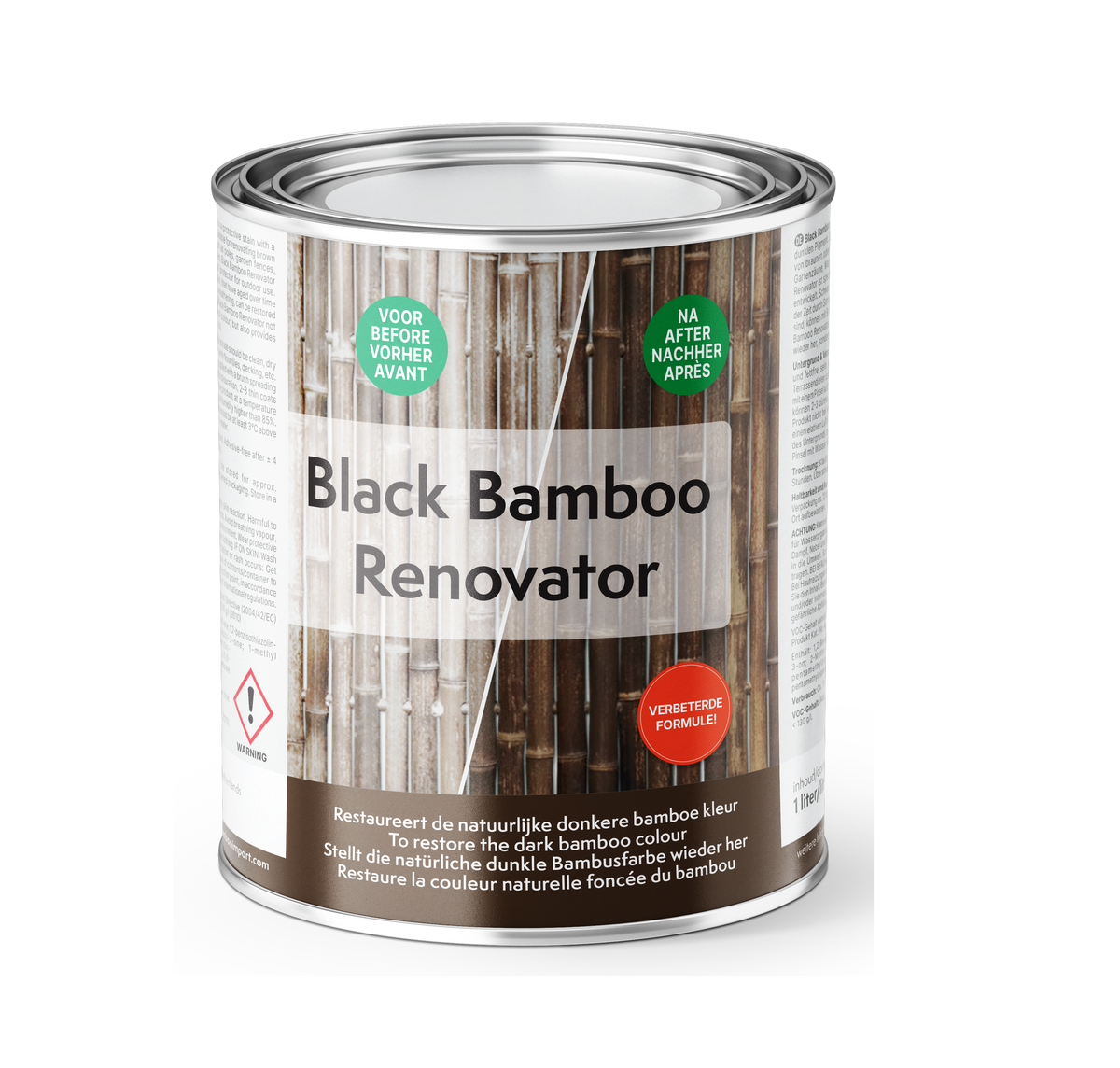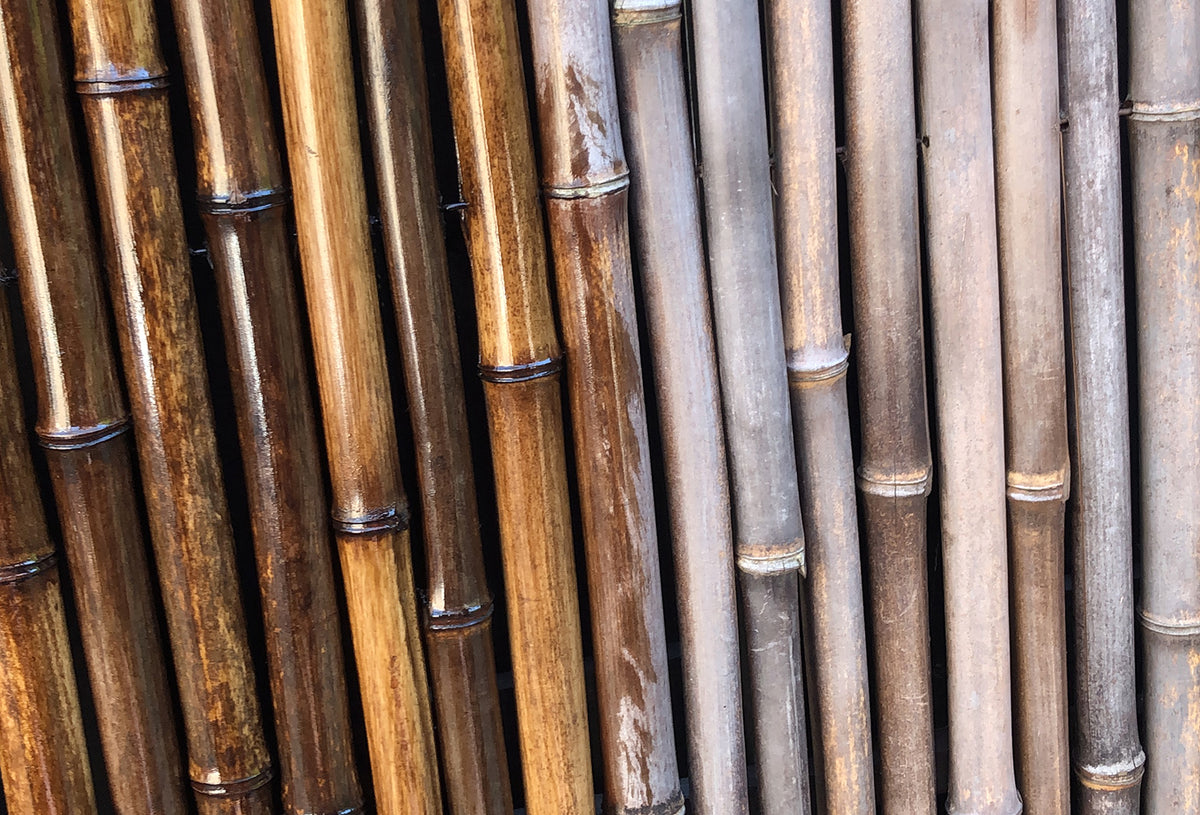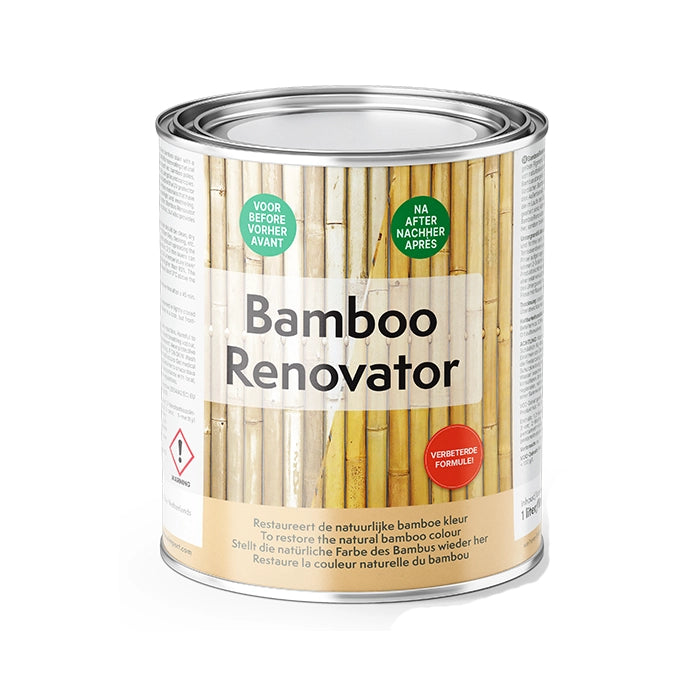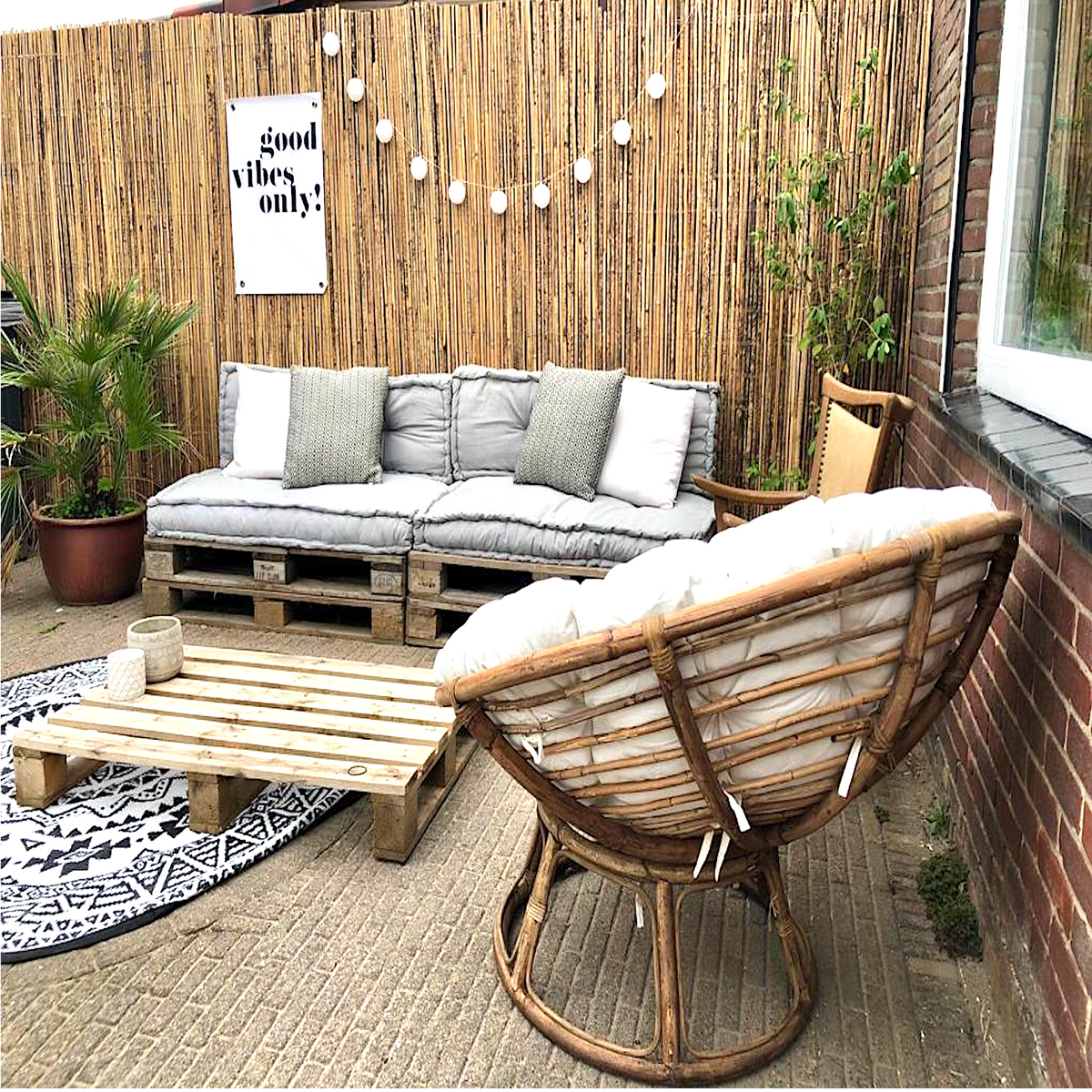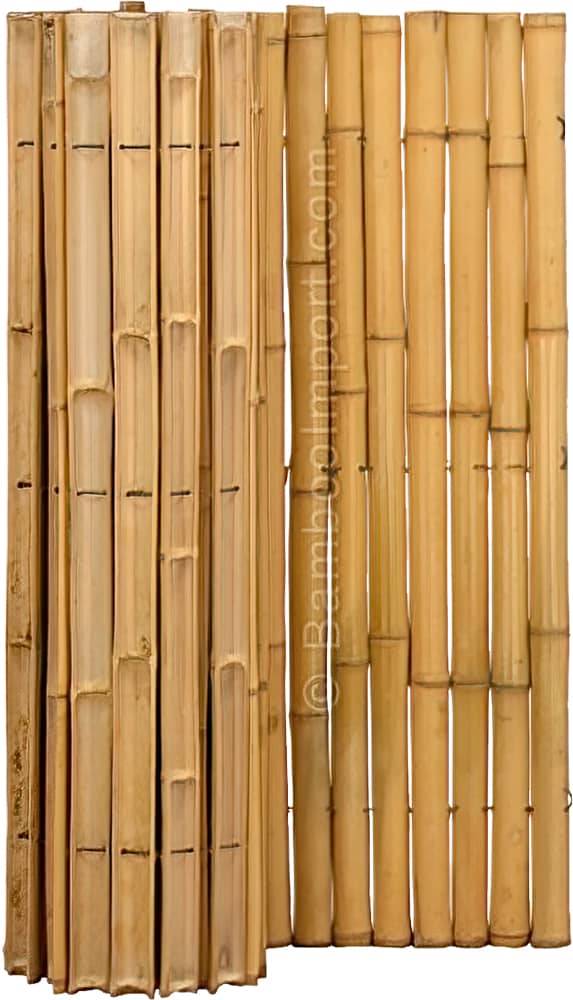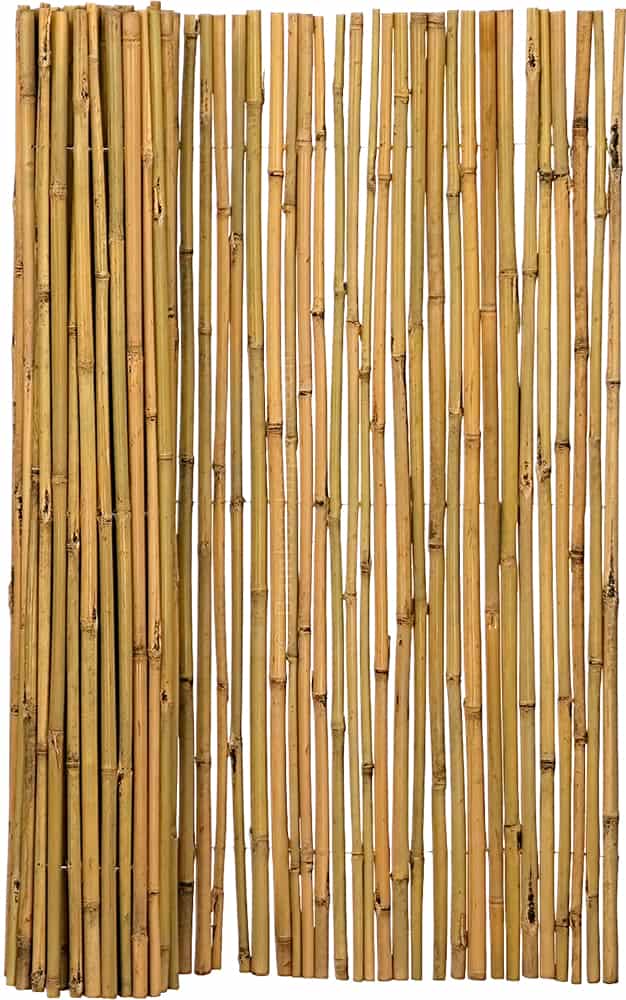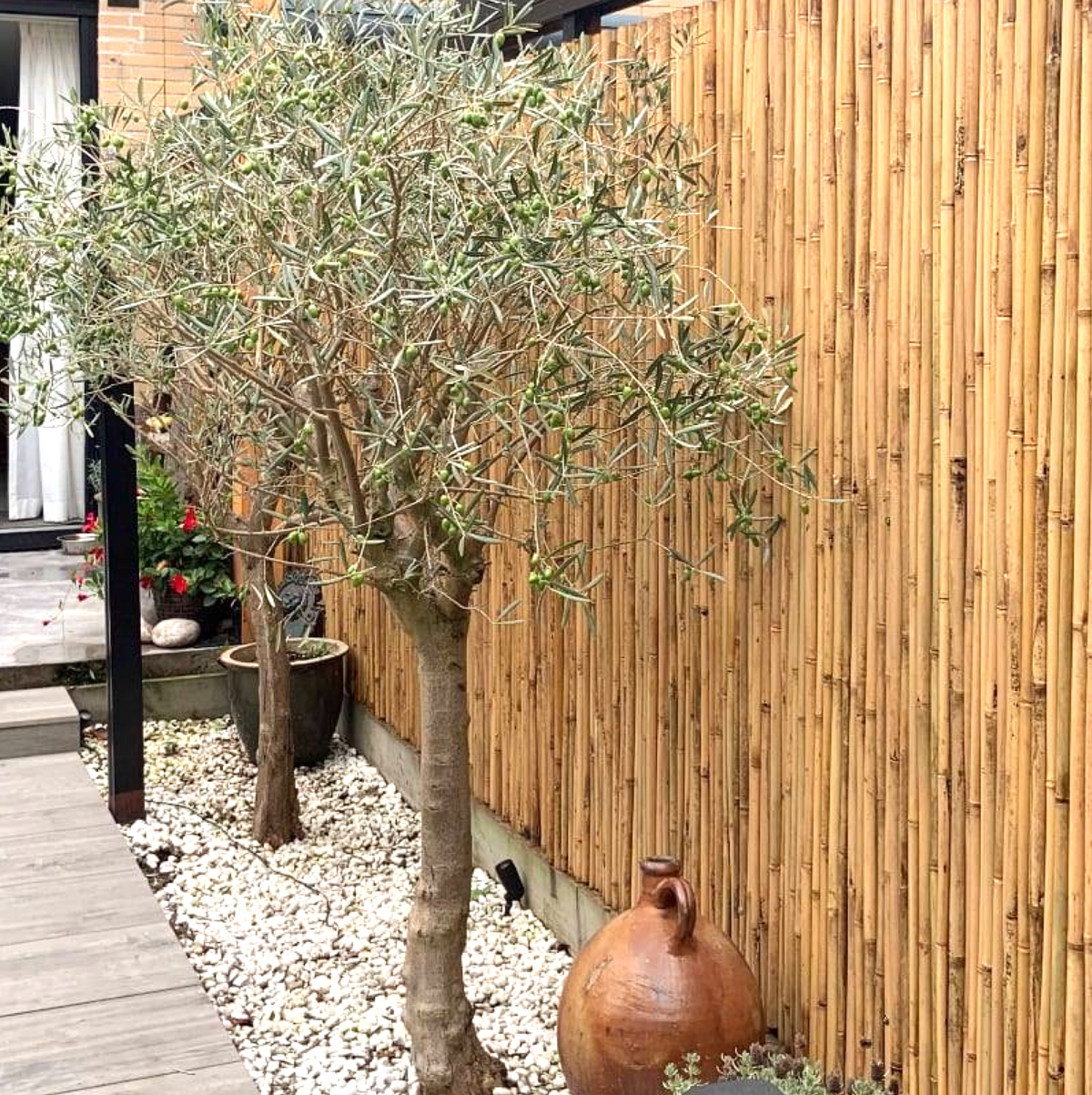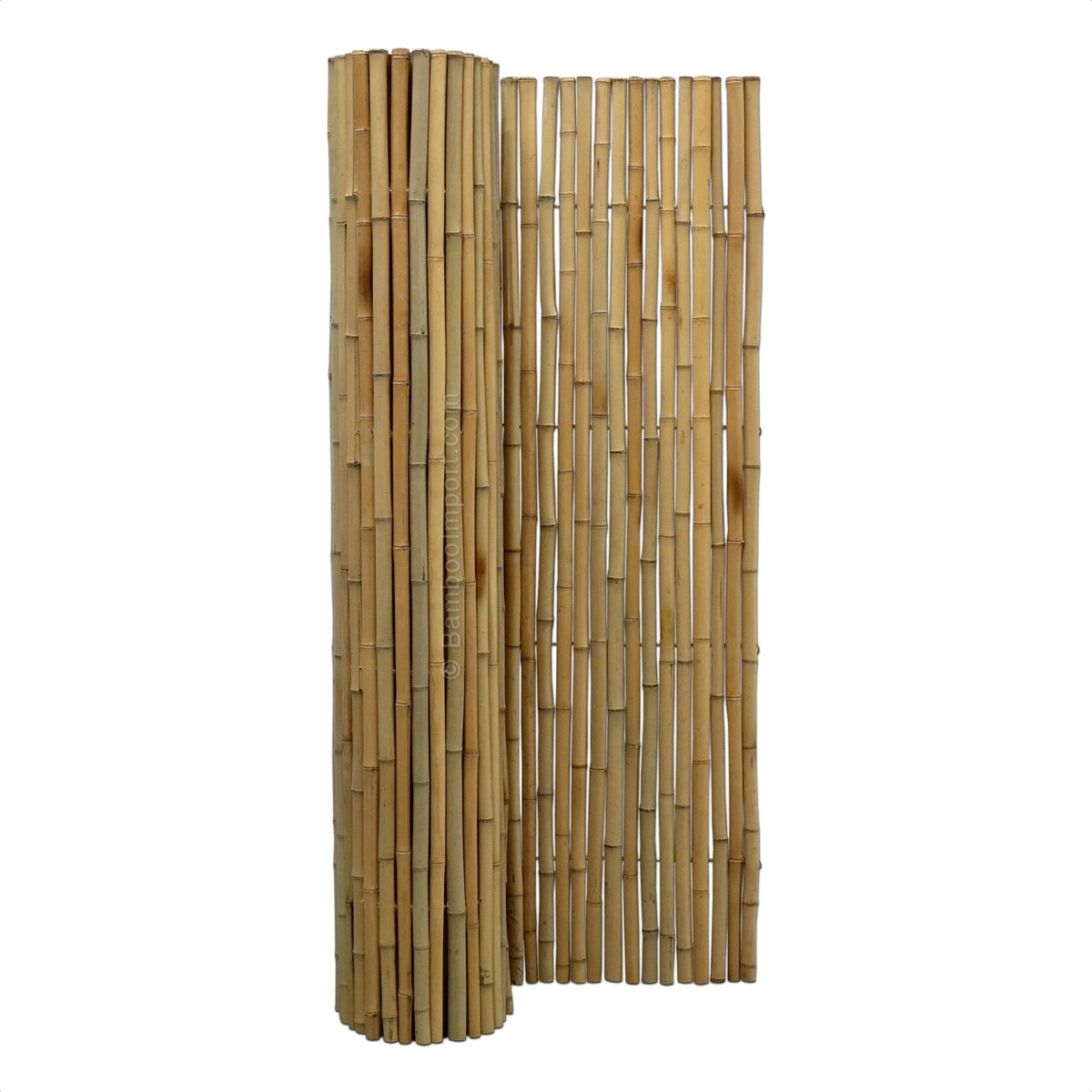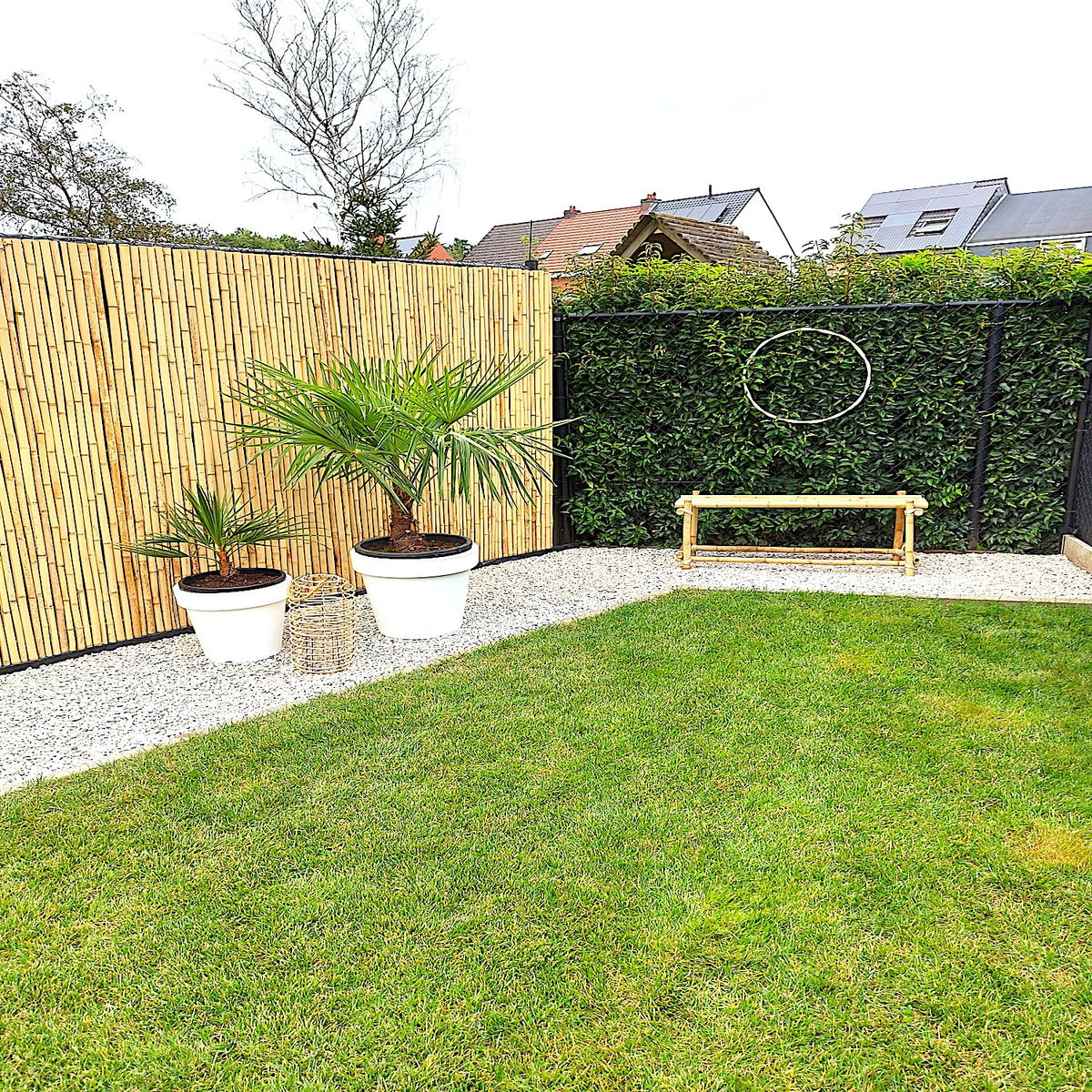Bamboo comes in all sorts of colors and sizes. There are many different types of bamboo, all of which have their own appearance.

Moso bamboo
Moso bamboo is a real show bamboo. It is naturally very yellow and has a kind of wax layer. This layer protects the bamboo and is a natural Bamboo Protector. Moso bamboo is the kind that is used for panel material. The color difference between the Moso stick and the bamboo panel is due to the processing: bamboo contains natural sugars. These sugars caramelize during the process and give the caramel color.
Moso bamboo sometimes wants to grow crooked. Therefore, some poles are “helped” so that they can still be used for a fence. By heating the bamboo, it can be straightened. This gives you a kind of heat stain on the bamboo that makes it completely unique as it is. Sometimes we get bamboo that is still green. This takes on the recognizable yellow color after a few weeks in the sun.

Left to right: Moso bamboo, Nigra bamboo, Tonkin bamboo.
Tonkin bamboo
Tonkin bamboo is a fairly thin bamboo with a relatively thick wall. This makes it comparatively very strong and makes it an excellent stick for guiding plants. You often see this bamboo in (vegetable) gardens as climbing pyramids or climbing frames on fences or walls. Tonkin has a natural beige color, sometimes tending towards gray-green. It has a shiny outer layer. Due to its relatively thick wall, Tonkin absorbs the most CO2 per kilo.
Nigra bamboo
This Chinese bamboo can be recognized by its black color and its conspicuous nodes, which often stick out a bit. This bamboo is truly black. However, this means that there is sometimes a color difference. You can already see the color difference on the trunk when you look at the bamboo before harvesting. Then, as it dries, this difference becomes even more apparent. So sometimes you get a sort of "stain" of natural bamboo on the sticks in your bamboo mat. The Nigra bamboo itself has a slightly stronger sheen like the Moso bamboo.
Guadua bamboo
Guadua bamboo is a super strong bamboo with a thicker wall. This bamboo has a natural beige color. The beige color of guadua tends to be slightly grayish. The trunk is a dull color and has an open structure. This bamboo is the only type of bamboo that we source from South America, namely Colombia.

Tali bamboo
Tali is an Indonesian bamboo that falls under the category of natural or beige, but tends to be more of a warm yellow. Tali can be recognized by the long runners between the nodes and the matte appearance. You often see this bamboo in bamboo garden fences, but our blinds are also made from tali bamboo.
Black Java bamboo
The name says it all: this bamboo is a black bamboo from the island of Java. This black bamboo is slightly more colorful than the nigra. However, there is always some color difference. The Black Java Bamboo grows to larger diameters. This makes it ideal for the black Bamboo Pergola. It is also used for bamboo garden fences.
Bamboo Care
So, the color differences in our bamboo are always natural. Each species can be identified by unique characteristics such as the outer layer, the shade and the distance between the nodes.Bamboo ages like any other natural product. Weather conditions and location are important factors. How much sun shines directly on your bamboo? That will determine how quickly the bamboo ages. As you may have read, some types of bamboo have a natural wax coating. It is better not to treat these types of bamboo with a stain right away. That would mold in conjunction with the wax coating. Therefore, it is best to treat these bamboos with Bamboo Booster to give them a good start. Other types of bamboo can be treated directly with Bamboo Protector. Treat your bamboo every year to maintain its color. You can also give a weathered natural bamboo a slightly warmer color by using our Black Bamboo Renovator. This contains a small pigment and gives the natural bamboo a warm caramel color.

